Defensible Space 101: How to Landscape Your Property to Reduce Wildfire Risk
Understanding Defensible Space: Your Home’s First Line of Defense Against Wildfires
Wildfires have become increasingly devastating across many regions, destroying thousands of homes and threatening communities every year. Creating defensible space—a strategic buffer zone around your property—is one of the most effective ways to protect your home and loved ones from this growing threat. With thoughtful planning and proper maintenance, you can significantly reduce wildfire risk while maintaining an attractive, thriving landscape.
Defensible space isn’t merely about clearing vegetation; it’s about implementing intelligent landscape design that minimizes fire hazards and creates barriers to slow or stop advancing flames. In this comprehensive guide, you’ll discover everything you need to know about creating and maintaining effective defensible space, from strategic zoning techniques to selecting fire-resistant plants that thrive in your specific region. Whether you live in a high-risk wildfire area or simply want to improve your property’s resilience, these expert recommendations will help safeguard your home for years to come.
What Is Defensible Space and Why Does It Matter?
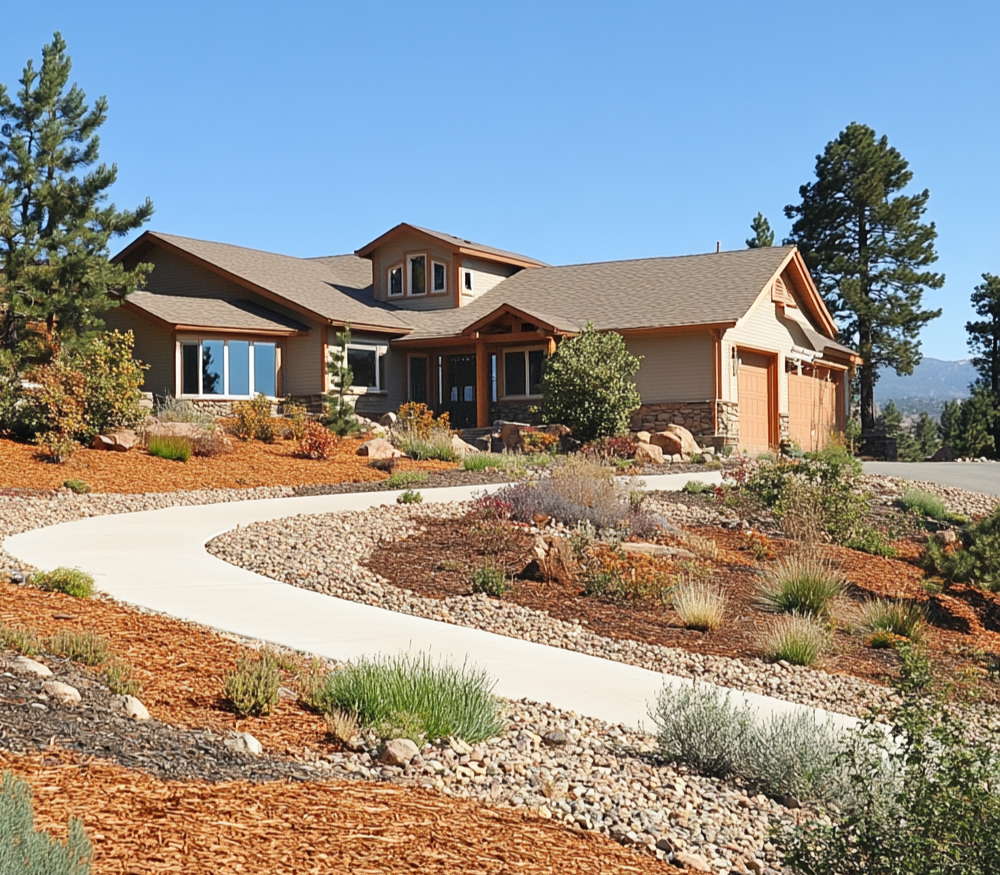
Defensible space is a carefully designed buffer zone between your home and the surrounding natural vegetation. This strategic arrangement of landscape features serves to slow advancing wildfires, reduce flame intensity, and create a safer environment for firefighters to defend your property if necessary. Without proper defensible space, flames can rapidly reach your home, fueled by dry vegetation, dense tree canopies, and combustible materials.
Key Benefits of Creating Defensible Space:
- Significantly reduces fire intensity by limiting available fuel sources
- Creates safer access for firefighters to protect your property during a wildfire
- Prevents wind-driven embers (a leading cause of home ignitions) from finding flammable material near structures
- Ensures compliance with state and local wildfire safety regulations and insurance requirements
- Enhances property value through well-maintained, thoughtfully designed landscaping
- Provides peace of mind knowing you’ve taken proactive steps to protect your investment
According to recent studies by fire science researchers, homes with properly maintained defensible space are up to 75 percent more likely to survive a wildfire than those without these protective measures. This makes defensible space not just recommended but essential for homeowners in fire-prone regions.
The Three-Zone Approach to Defensible Space: A Comprehensive Strategy
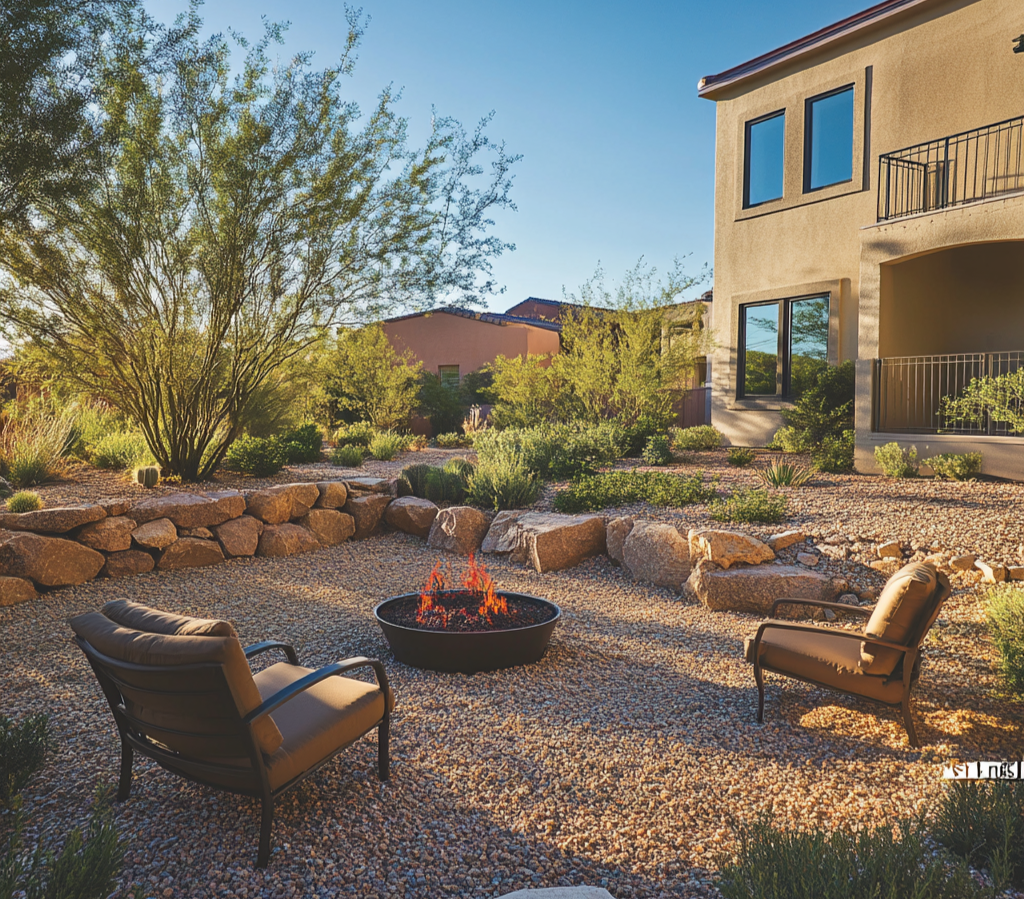
Creating effective defensible space involves strategically dividing your property into specific zones, each with tailored guidelines to maximize fire resistance. This systematic approach ensures comprehensive protection as you move outward from your home.
Zone 1: Immediate Zone (0-5 Feet from Structures)
This critical area directly surrounding your home should be completely free of combustible materials to minimize ignition risk from wind-blown embers.
Essential Zone 1 Guidelines:
- Use noncombustible materials such as concrete, gravel, stone pavers, or fire-resistant ground covers.
- Eliminate all dead vegetation, dried leaves, and pine needles from roofs, gutters, porches, and decking.
- Remove or prune overhanging branches that could drop debris onto your roof or allow fire to climb to your home.
- Replace combustible mulch with stone or gravel options near structures.
- Keep firewood, propane tanks, and other highly combustible items at least 30 feet from any structure.
- Consider hardscaping features that create natural firebreaks.
- Install metal mesh screens on vents, on eaves, and under decks to prevent ember intrusion.
The immediate zone is your home’s first line of defense—maintaining this area with vigilance is absolutely essential for wildfire protection.
Zone 2: Intermediate Zone (5-30 Feet from Structures)
This secondary buffer serves to slow fire progression and reduce flame height and intensity before it reaches your home.
Effective Zone 2 Strategies:
- Plant low-growing fire-resistant shrubs and trees appropriately spaced to prevent continuous fuel paths.
- Maintain tree spacing of at least 10-15 feet between canopies to prevent fire from jumping between trees.
- Create “fuel breaks” with hardscaping features, driveways, and proper plant spacing.
- Regularly mow lawns to a maximum height of 4 inches and keep well irrigated during fire season.
- Prune tree branches to create at least 6-10 feet of clearance from the ground to eliminate “ladder fuels.”
- Remove dead plant material and thin out dense vegetation clusters.
- Consider drip irrigation systems to maintain plant moisture content during dry periods.
- Arrange plantings in small irregular clusters rather than large, continuous masses.
Zone 2 management balances aesthetics with safety, allowing for beautiful landscaping that still disrupts the path of advancing flames.
Zone 3: Extended Zone (30-100+ Feet from Structures)
This outermost zone focuses on reducing the energy of approaching wildfires and minimizing the threat of crown fires in forested areas.
Zone 3 Management Techniques:
- Thin out dense vegetation to create space between trees and shrubs.
- Remove accumulations of dead vegetation, fallen branches, and dry brush.
- Create and maintain space between tree crowns to prevent fire from spreading through the canopy.
- Implement strategic firebreaks using driveways, gravel paths, or stone walls.
- Space trees to reduce competition for resources and maintain healthier, more fire-resistant specimens.
- Consider the topography of your land—increase spacing on steeper slopes where fire travels more rapidly.
- Remove invasive species that may increase fire risk or fuel loads.
- Maintain access roads and driveways with adequate clearance for emergency vehicles.
For properties in heavily wooded areas, proper Zone 3 management is crucial for reducing the intensity of approaching wildfires before they reach your inner defensive zones.
Fire-Resistant Landscaping: Best Practices and Strategies
A well-designed fire-wise landscape significantly reduces the likelihood of flames reaching your home. The combination of strategic layout, appropriate plant selection, and proper maintenance creates multiple layers of protection.
Essential Fire-Resistant Landscaping Principles:
- Incorporate fire-resistant hardscaping elements like stone walls, gravel paths, and patios to create natural firebreaks.
- Use nonflammable mulch materials such as crushed stone or decomposed granite instead of wood chips or pine straw.
- Design with defensible space zones in mind, placing the most fire-resistant elements closest to structures.
- Create landscape “islands” separated by noncombustible areas to prevent continuous fuel paths.
- Maintain healthy, hydrated plants with regular irrigation to increase fire resistance.
- Consider the mature size of plants when planning to ensure proper spacing is maintained over time.
- Use inorganic mulch within 5 feet of structures to eliminate potential fuel sources.
- Install water features like ponds or streams that can serve as natural firebreaks.
- Position highly flammable plants away from structures, windows, and vents where embers could collect.
Remember that fire-resistant landscaping doesn’t mean sacrificing beauty or diversity—it simply requires thoughtful planning and appropriate plant selection based on fire behavior principles.
Top Fire-resistant Plants for Your Defensible Space
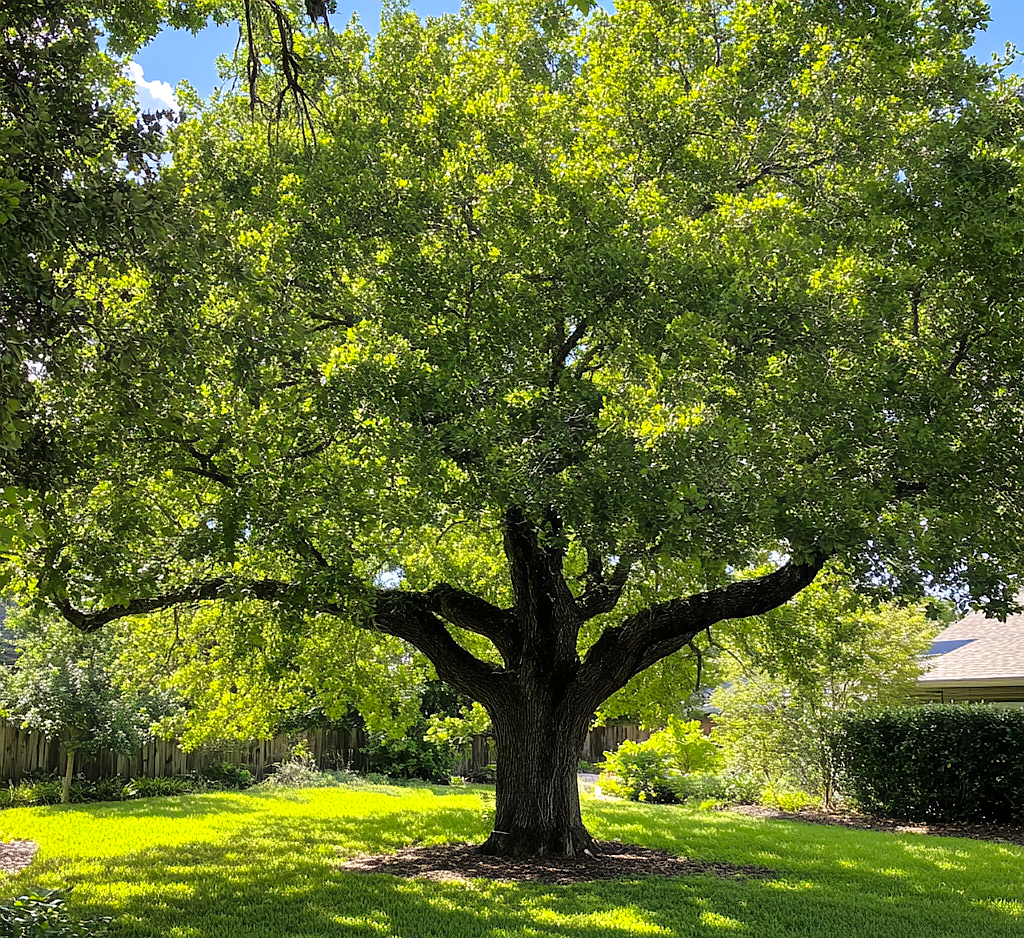
Certain plants naturally resist ignition and slow fire spread due to their high moisture content, limited resin production, and growth characteristics. When selecting plants for your fire-wise landscape, consider these excellent options:
Fire-resistant Trees
- Oak varieties (Quercus): Thick bark and high moisture content
- Maple (Acer spp.): Smooth bark and high leaf moisture
- Aspen (Populus tremuloides): High moisture content and minimal resin
- Birch (Betula spp.): Low resin content and rich in moisture
- Fruit trees: Apple, cherry, and other properly maintained fruit trees
- Eastern redbud (Cercis canadensis): Minimal resin and compact growth
- American mountain ash (Sorbus americana): Moisture-rich foliage
- Catalpa (Catalpa speciosa): Large, moisture-rich leaves
Fire-resistant Shrubs
- California lilac (Ceanothus spp.): Drought tolerant with minimal dead material
- Lilac (Syringa spp.): Moisture-rich leaves and minimal deadwood
- Smooth sumac (Rhus glabra): Minimal resin and compact growth
- Currant (Ribes spp.): High moisture content
- Oregon grape (Mahonia aquifolium): Tough, moisture-rich leaves
- Red osier dogwood (Cornus sericea): High moisture content
- Serviceberry (Amelanchier spp.): Minimal deadwood retention
- Mock orange (Philadelphus spp.): High leaf moisture
Fire-resistant Ground Covers and Perennials
- Ice plant (Delosperma spp.): Succulent leaves with high water content
- Creeping phlox (Phlox subulata): Forms a dense, low mat with minimal fuel
- Wild strawberry (Fragaria spp.): Low-growing with minimal fuel load
- Yarrow (Achillea millefolium): Drought tolerant with limited dead material
- Sedum varieties: Succulent foliage with high moisture content
- Stonecrop (Sedum spp.): Succulent leaves that resist ignition
- Creeping thyme (Thymus serpyllum): Low-growing with minimal fuel load
- Lavender (Lavandula spp.): Contains oils but maintains moisture when properly watered
- Society garlic (Tulbaghia violacea): Drought tolerant with minimal dead material
- California fuchsia (Epilobium canum): Drought-adapted with limited fuel
When selecting plants, consider your specific climate, soil conditions, and local fire regulations. Native plants adapted to your region generally require less maintenance and may naturally possess fire-resistant qualities suitable for your area.
Seasonal Maintenance: Keeping Your Defensible Space Effective Year-Round
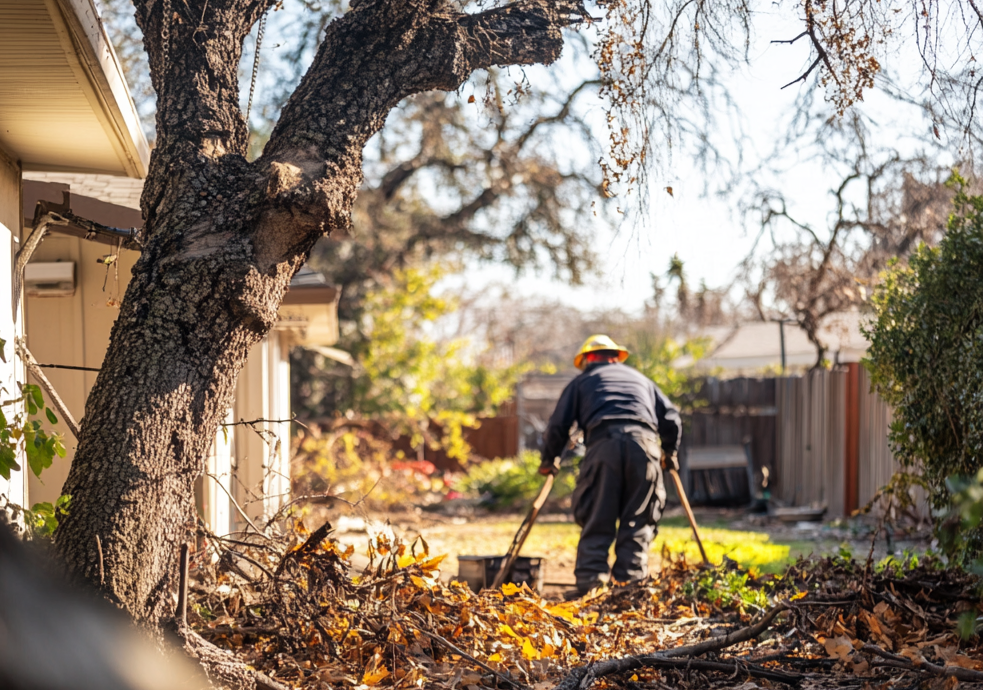
Creating defensible space is not a one-time project—it requires ongoing maintenance to remain effective against wildfire threats. Different seasons demand different maintenance tasks to ensure that your property stays protected.
Spring Maintenance Checklist:
- Conduct a thorough property inspection after winter to identify dead vegetation.
- Clear winter debris and fallen branches from all zones.
- Prune trees and shrubs before new growth appears.
- Clean gutters and roof areas of accumulated debris.
- Check irrigation systems for proper function before fire season.
- Apply new nonflammable mulch where needed, keeping it away from structures.
- Assess tree health and remove any damaged or diseased specimens.
Summer Maintenance Priorities:
- Maintain a regular mowing schedule to keep grass under 4 inches.
- Water strategically to maintain plant moisture during the highest fire-risk season.
- Remove any dry or dead vegetation promptly as it appears.
- Check for and remove invasive species that may increase fire risk.
- Keep trees pruned to maintain clearance from structures and prevent ladder fuels.
- Ensure 10-foot clearance around chimneys and stovepipes.
- Monitor and address any new hazards that develop during peak fire season.
Fall Maintenance Tasks:
- Remove fallen leaves from gutters, roof valleys, and around structures.
- Cut back perennials that have finished their growing season.
- Clear dead annuals from garden beds.
- Prune trees after leaf drop for better visibility of structure.
- Remove fallen fruit from fruit trees.
- Assess your defensible space zones before winter and address any issues.
- Clean and store garden equipment properly for the off-season.
Winter Preparation:
- Remove any remaining dead vegetation before winter weather makes it inaccessible.
- Store outdoor furniture, cushions, and decorative items that could become fuel.
- Ensure firewood is stored properly at least 30 feet from structures.
- Check roof and gutters one final time before winter precipitation.
- Plan landscape improvements for the following spring.
- Review and update your emergency evacuation plan and emergency supply kit.
Consistent maintenance is crucial for effective defensible space. Consider creating a seasonal maintenance calendar to ensure that no important tasks are overlooked throughout the year.
Beyond Landscaping: Additional Wildfire Protection Measures
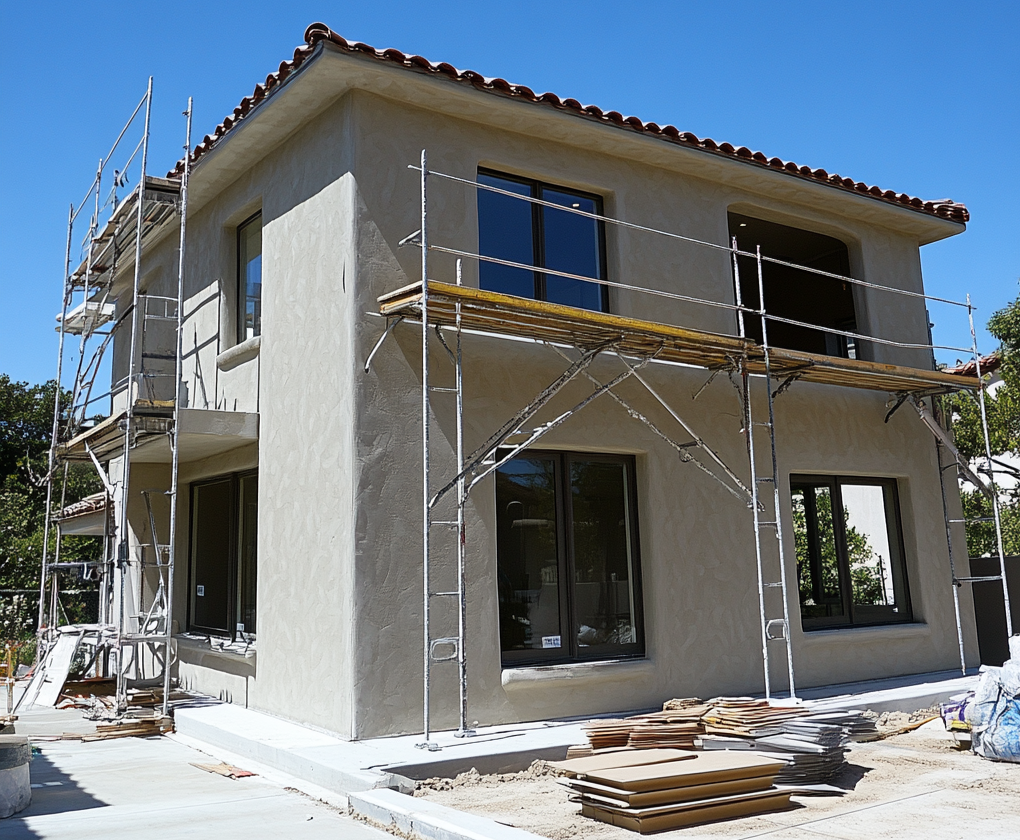
While defensible space is a critical component of wildfire protection, comprehensive safety requires additional measures to safeguard your home and property.
Fire-resistant Building and Home Improvements:
- Install ember-resistant vents and screens on all exterior openings.
- Consider Class A fire-rated roofing materials during replacements or new construction.
- Use fire-resistant siding options such as stucco, fiber cement, or treated wood.
- Replace wooden fences and gates with noncombustible alternatives, especially where they connect to structures.
- Upgrade to multi-pane tempered glass windows that resist breakage during extreme heat.
- Install spark arrestors on chimneys to prevent ember release.
- Use fire-resistant materials for decks and porches or create noncombustible zones beneath them.
- Consider external sprinkler systems designed specifically for wildfire protection.
Emergency Preparedness:
- Develop and practice a detailed evacuation plan with all household members.
- Create an emergency supply kit with essential items to last for at least 72 hours.
- Install smoke detectors and fire extinguishers throughout your home.
- Maintain clear address signage visible from both directions for emergency responders.
- Ensure driveways and access roads meet minimum width requirements for fire trucks.
- Document your property with photos or video for insurance purposes.
- Consider backup power options for well pumps and essential systems during power outages.
- Stay informed about local fire conditions through alert systems and weather updates.
Working with professional arborists and fire safety experts can provide valuable insights tailored to your specific property and regional fire risks.
Conclusion: Investing in Defensible Space for Long-Term Protection
Creating and maintaining defensible space is one of the most effective investments you can make to protect your home from the growing threat of wildfires. Through strategic landscaping, appropriate plant selection, and consistent maintenance, you can dramatically reduce fire risk while creating a beautiful, sustainable landscape that enhances your property’s value and your peace of mind.
The principles of defensible space aren’t just about wildfire protection—they promote healthy landscapes, water conservation, and sustainable gardening practices that benefit your property in numerous ways. By implementing these recommendations, you’re not only safeguarding your home but also contributing to the overall resilience of your community against wildfire threats.
We may receive affiliate compensation for some of the links below at no cost to you if you decide to make a purchase.


